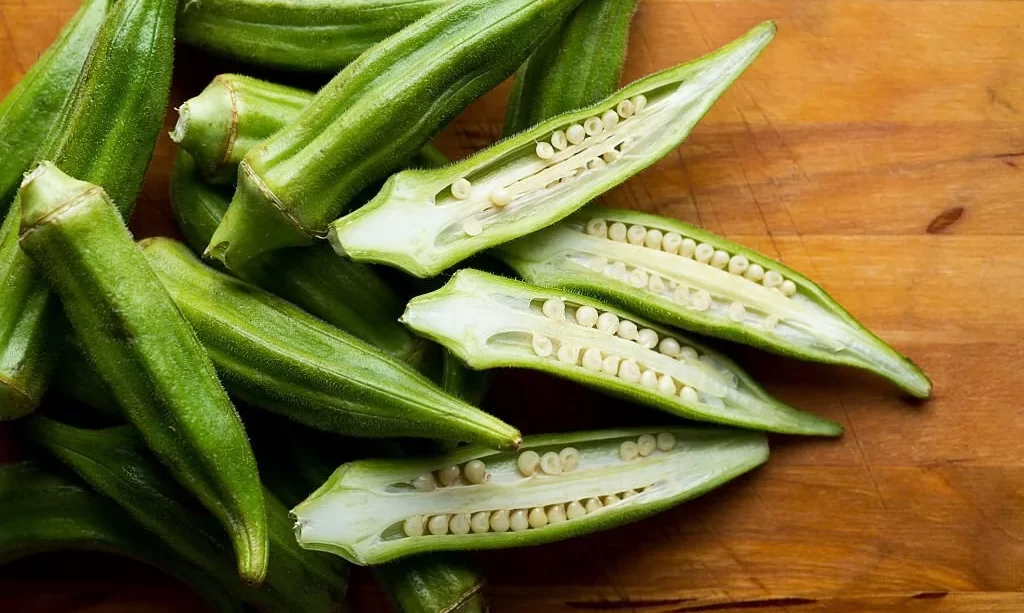Okra, with its delightful versatility and unique flavor, is a cherished vegetable in many cuisines around the world. Whether it’s starring in a hearty gumbo, gracing a plate of crispy fried okra, or adding a delightful touch to vegetable medleys, okra’s culinary potential is boundless. However, to truly appreciate its taste and texture, it’s crucial to use fresh okra in your recipes. In this guide, we’ll explore the art of identifying when okra has gone bad, ensuring that you enjoy the best flavors and experiences from this remarkable vegetable. From visual cues to texture, smell, and even a taste test, we’ll cover all the ways to tell if your okra is past its prime.
Visual Inspection
Visual cues are often the first indicators of okra’s freshness. Here’s what to look for:
- Fresh Okra Appearance: Start by examining the color of the okra. Fresh okra should be vibrant green, indicating its youth and vitality. It should also have a firm texture when touched.
- Blemishes and Mold: Watch out for any dark spots, blemishes, or mold on the surface of the okra. These are clear signs of spoilage and should be cause for concern.
- Sliminess: Okra should not feel slimy to the touch. If you notice a slimy or gooey texture, it’s a sign that the okra is no longer fresh.
- Shriveling: Fresh okra is plump and firm. If the pods appear shriveled or wrinkled, it’s a sign that they have started to lose moisture and freshness.
By conducting a visual inspection, you can quickly determine if your okra is still at its best or if it’s time to consider alternative options.
Texture Assessment
The texture of okra plays a significant role in determining its freshness:
- Fresh Okra Texture: When assessing the texture of fresh okra, you should feel a pleasing combination of crispness and tenderness. It should yield slightly when gently pressed but still maintain its overall firmness.
- Signs of Spoilage: One of the primary indicators of spoiled okra is a change in texture. If your okra feels mushy, slimy, or excessively soft to the touch, it has likely gone bad. Fresh okra should not exhibit any of these undesirable traits.
Smell Test
The smell of okra can be a reliable indicator of its freshness:
- Fresh Okra Scent: When you bring a fresh okra pod close to your nose, it should have a mild, earthy scent. This subtle aroma is a positive sign of its quality.
- Spoilage Odors: If you detect any foul or unpleasant odors when smelling the okra, it’s a clear indication that the okra has spoiled. Spoiled okra can emit off-putting smells that are far from the earthy aroma of freshness.
Taste Test (Optional)
While a visual inspection, texture assessment, and smell test are usually sufficient to determine okra’s freshness, a taste test can be the final confirmation:
- Exercise Caution: If you choose to conduct a taste test, do so cautiously. Take a small bite of the okra, focusing on its flavor and texture.
- Signs of Spoilage: If the okra tastes off, has an unpleasant or sour flavor, or the texture is mushy or slimy, it has spoiled. In such cases, it is best to spit it out and not consume any more.
While the taste test is optional, it can provide that extra level of certainty about the quality of your okra, especially if you have doubts after the visual inspection and smell test. However, it’s important to prioritize safety and avoid consuming any okra that exhibits signs of spoilage in any of the tests.
Proper Storage and Shelf Life
To maintain the freshness of your okra and extend its shelf life, proper storage is crucial:
- Dry Storage: Ensure that your okra is dry before storing it. Excess moisture can lead to mold and decay. Pat it gently with a clean kitchen towel if needed.
- Refrigeration: Store the okra in a perforated plastic bag or a paper towel in the vegetable crisper drawer of your refrigerator. This helps maintain the ideal humidity and temperature for okra.
- Limited Shelf Life: Fresh okra is at its best within 3-4 days of purchase. After this period, it may start to lose its crispness and flavor.
- Size: 16” x 20”, 1 Roll = 350 Bags
- Continuous roll with easy-open perforation for peel off
- Food Grade Safe: Perfect for Fruits, Bread and Vegatables storage
- Durable: Strong and sturdy food storage bags won’t break easily even if storage heavy things
- Widely Use: Used as food storage bags, trash bags, garbage / rubbish bag, pet waste bags, etc
When in Doubt, Discard
Food safety should always be a top priority. If you have any doubts about the freshness of your okra based on visual cues, texture, smell, or taste, it’s best to err on the side of caution:
- Avoid Risks: Do not take risks with food that shows signs of spoilage or has an off-putting odor or taste. Consuming spoiled okra can lead to digestive discomfort or foodborne illnesses.
- Safe Disposal: Dispose of spoiled okra properly, either in your compost bin or in a sealed bag in your trash to prevent any lingering odors.
Conclusion
Identifying when okra has gone bad is essential to ensure that you enjoy the full flavors and culinary potential of this versatile vegetable. By conducting a visual inspection, assessing its texture, and performing a smell test, you can confidently determine if your okra is fresh and ready to be part of your culinary creations. If there’s any doubt about its freshness, remember that it’s better to discard it than risk a less-than-enjoyable dining experience or potential health concerns. Fresh okra, when properly selected and stored, can elevate your dishes and add a delightful touch to your meals.





